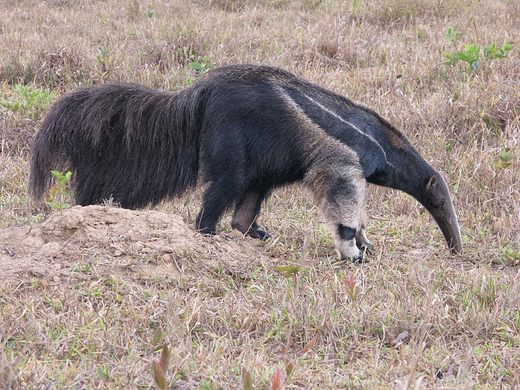THE GIANT ANTEATERS
OF BRAZIL
G'day folks,
This breathtaking national park is one of the best places to see the weird and wonderful giant anteater in the wild.
The wonderfully unique giant anteater is an endangered species that is disappearing from many regions of Brazil. But there are still wild areas where this strange species clings on to survival and can be seen easily. One of the best places in the country to observe these bizarre beasts is in the magnificent Serra da Canastra National Park in the state of Minas Gerais.
Serra Da Canastra has been a national park since 1972 and comprises an area of 72,000 acres of Cerrado savanna, hills, and forest, through which the São Francisco river flows. Highly biodiverse, over 350 species of animal live in the park and many rare and endangered plant species such as orchids are found here too. Still the real highlight of the park is undoubtedly its large mammal species, and especially the giant anteater.
This large creature may be seen very easily as it ambles on its knuckles through the long grass in search of its prey using its strange elongated snout to detect nearby anthills to raid. When visiting the park, you’re likely to see an anteater feed using its sharp claws to break open an anthill and its extraordinary long tongue to extract the insects. If you are really lucky, you may even see a mother anteater with her baby clinging to her back.
Other endangered species may also be observed here, such as the pampas deer, maned wolf, puma, pampas cat, rhea ostrich, giant armadillo, and the critically endangered Brazilian merganser duck. But these are much harder and more time-consuming to find than the anteater, and will typically make seasonal movements to less accessible areas of the reserve. (If you want to stand a good chance of seeing these creatures it’s best to plan the timing of your visit in advance with the animals’ seasonal behavior patterns in mind.)
Serra Da Canastra is also an area of astounding landscapes with many trails to explore. A particularly famous natural landmark is the Casca D’Anta waterfall, which is over 610 feet tall and a renowned site of tranquility and enchanting natural beauty. The park is also home to many curious prehistoric rock formations that form eerie shapes. They are best seen at the Curral de Pedras and Garagem de Pedras sites.
Clancy's comment: Obviously a great place for wildlife photographers.
I'm ...









No comments:
Post a Comment